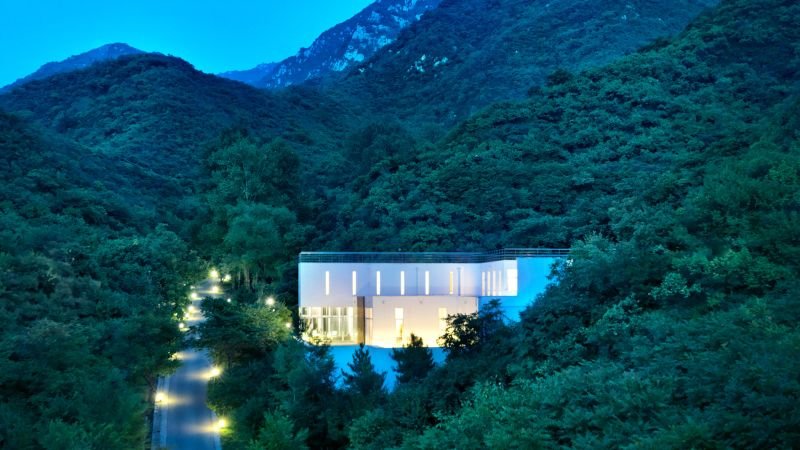Every day, throngs of tourists worldwide embark on journeys to fulfill their bucket-list dreams of visiting the Great Wall of China. Despite the wall’s expansive 5,500-mile stretch across the country from east to west, most visitors find themselves gravitating toward the Badaling or Mutianyu sections, the two areas closest to Beijing.
However, for those seeking an alternative and more serene experience, just an hour’s drive north of bustling Beijing lies Commune by the Great Wall. Positioned as a popular weekend retreat for locals, this luxurious hotel, nestled amid yellow-leaved gingko trees, offers a unique opportunity for guests to stroll casually to the Wall.
Unlike the usual routine of rising early, enduring crowded queues, and contending with camera-toting tourists, Commune by the Great Wall provides a tranquil escape. A mere 20-minute walk from the hotel reception leads to the Shuiguan section of the wall, where visitors can enjoy unobstructed views from its highest turrets, far from the typical tourist hustle.
Commune by the Great Wall is more than just a hotel; it is an albergo diffuso, or diffused hotel, where guests stay in a collection of buildings rather than a central structure. This distinctive setup can initially bewilder newcomers, as they transition from the Chinese countryside to a luxury neighborhood development. However, a central building serves as the reception area and houses the hotel’s restaurants. Guests are chauffeured from check-in to their accommodations in golf carts around the expansive property.
The brainchild of developers Pan Shiyi and Zhang Xin, the hotel was originally conceived as upscale country houses for Beijing’s elite but evolved into a unique hotel experience. A roster of renowned architects and designers, including Pritzker Prize winner Shigeru Ban and artist Ai Weiwei, were enlisted to create individual dwellings, resulting in a diverse architectural ensemble.
Shigeru Ban’s “Furniture House” integrates chairs and tables into the structure, drawing inspiration from his observations following a Japanese earthquake. Gary Chang’s “suitcase house” mimics the micro-flats of Hong Kong, concealing living spaces beneath a seemingly plain wooden cabin. Ai Weiwei, not only an iconic artist but also a landscape designer, left his mark on the surroundings.
The hotel, awarded a special commendation at the 2002 Venice Architecture Biennale, has continued to expand. Kengo Kuma’s bamboo house has been replicated, and additional communal buildings cater to individual travelers.
Commune by the Great Wall joined Hyatt’s Unbound Collection in 2021, adding further allure for loyalty points enthusiasts. Plans for 2024 include upgrading and renovating the original 12 buildings, some of which endured wear and tear from years of guests and damage during the 2023 floods in the Beijing area.
In essence, Commune by the Great Wall offers more than just proximity to a global landmark; it provides a tranquil retreat with a diverse architectural landscape, making it a destination in itself for those seeking an escape from the typical Great Wall tourist experience.
